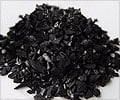Sunlight, rather than microbes, plays a controlling role in the creation of carbon dioxide from material emitted by Arctic soils, a new study reveals.

Lead author Rose Cory from the University of Michigan said that converting soil carbon to carbon dioxide was a two-step process where first, the permafrost soil had to thaw and then bacteria must turn the carbon into greenhouse gases, carbon dioxide or methane. While much of this conversion process took place in the soil, a large amount of carbon was washed out of the soils and into rivers and lakes.
The research team measured the speed at which both bacteria and sunlight converted dissolved organic carbon into carbon dioxide in all types of rivers and lakes in the Alaskan Arctic, from glacial-fed rivers draining the Brooks Range to tannin-stained lakes on the coastal plain.
In virtually all of the freshwater systems they measured, however, sunlight was always faster than bacteria at converting the organic carbon into CO2.
Another factor limiting the microbial contribution was that bacteria grew more slowly in the cold, nutrient-rich waters.
The source of all of this organic carbon was primarily tundra plants, and it had been building up for hundreds of thousands of years, but doesn't completely break down immediately because of the Arctic's cold temperatures. Once the plant material got deep enough into the soil, the degradation stopped and became preserved.
Advertisement
The study is published in the journal Science.
Advertisement









